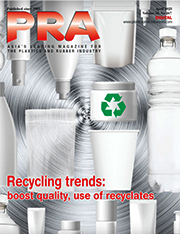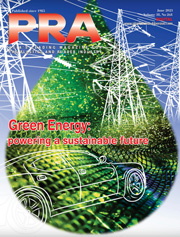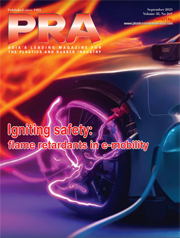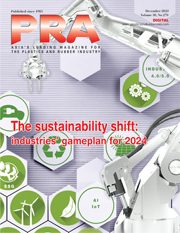Green news: Syensqo achieves breakthrough in mechanical recycling of PVDC; BASF develops biomass-balanced PESU, claims it’s the first in world

Materials firm Syensqo says it has successfully completed a recycling initiative with trials that have proven that multilayer food packaging structures with polyvinylidene chloride (PVDC) can effectively be recycled into valuable feedstock for other applications within a standard polyethylene (PE) based waste stream. The trials have been conducted by CSI, an acknowledged provider of testing and certification services for controlled environments, part of IMQ group, it adds. It markets PVDC under the Ixan brand.
PVDC is well known to offer the best oxygen and water vapour barrier in food packaging. The tests were performed with structures for high-barrier meat packaging using PE/EVA/IxanPVDC/EVA/PE multilayer films. The impact of the structures on the recycling process was evaluated in comparison to a reference sample of real flexible packaging waste.
The trials were conducted in compliance with EN 13430, which defines the requirements for packaging material recycling in Europe. The multilayer IxanPVDC structures passed all testing without any critical issues in grinding, subsequent washing/drying, extrusion/pelletising and injection moulding even at 220°C.
The project has clearly proven that multilayer food packaging with PVDC can be mechanically recycled in an open loop approach together with PE waste, enabling the efficient, flexible and sustainable reuse of the resulting feedstock in injection moulded items such as flower pots, pallets, benches, etc.
It adds that this is a significant achievement, as European community initiatives aim to increase the percentage of plastic packaging that is effectively recycled across Europe.
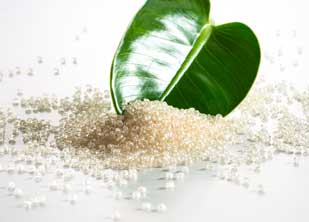
In other news, German chemicals firm BASF says it has developed what it says is the world's first biomass-balanced polyethersulphone (PESU). Its Ultrason E 2010 BMB contributes to substituting fossil resources, and is targeted at industries as diverse as household and catering, automotive, electrics and electronics (E&E), healthcare as well as water and sanitary.
For biomass-balanced (BMB) Ultrason E 2010, fossil raw materials are replaced by renewable feedstock at the beginning of production. The renewable feedstock comes from organic waste: the corresponding amount is attributed to the Ultrason grade via a mass balance approach which is certified according to ISCC Plus.
The resulting BMB grade has a lower product carbon footprint (PCF) compared to the standard BASF material by using renewable feedstock and 100% green electricity in a resource-efficient process in the production plant in Ludwigshafen, Germany.
BASF adds it also offers its Ultrason customers transparency by providing PCF data to support them in evaluating the PCF of their own products. This benefits many applications used in daily life like reusable bottles for adults and babies, microwave dishes and appliances, but also automotive fuel parts, medical devices, E&E connectors and consumer electronics.
In addition to these sustainability advantages, Ultrason E 2010 BMB is a drop-in solution: The BASF PESU is identical to the standard grade in properties, quality, and certification for e.g., food and water contact. As a result, customers do not have to re-qualify their applications made of Ultrason E 2020 BMB or adapt their existing manufacturing processes for injection moulding or extrusion.
Almost 50% of the fossil raw materials required for the manufacturing of Ultrason E 2010 are replaced by ISCC Plus certified bio-circular feedstocks which results in an attributed amount of 39% to the final Ultrason E 2010 BMB grade.
BASF has developed a digital application to calculate the cradle-to-gate PCFs for its sales products, including Ultrason.
Ultrason is the trade name for BASF’s product range of polyethersulphone (Ultrason E), polysulphone (Ultrason S) and polyphenylsulphone (Ultrason P).
(PRA)SUBSCRIBE to Get the Latest Updates from PRA Click Here»

